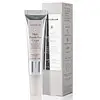What's inside
What's inside
 Key Ingredients
Key Ingredients

 Benefits
Benefits

 Concerns
Concerns

 Ingredients Side-by-side
Ingredients Side-by-side

Water
Skin ConditioningGlycerin
HumectantSimmondsia Chinensis Seed Oil
EmollientStearic Acid
CleansingSqualane
EmollientGlyceryl Stearate
EmollientCetyl Alcohol
EmollientStearyl Alcohol
EmollientPalmitic Acid
EmollientAcetyl Hexapeptide-8
HumectantPalmitoyl Tetrapeptide-7
Skin ConditioningPalmitoyl Tripeptide-1
Skin ConditioningPalmitoyl Tripeptide-5
Skin ConditioningDunaliella Salina Extract
Skin ConditioningPanthenol
Skin ConditioningSodium Hyaluronate
HumectantHydroxyacetophenone
AntioxidantSorbitan Oleate
EmulsifyingAluminum Starch Octenylsuccinate
AbsorbentAcrylamide/Sodium Acryloyldimethyltaurate Copolymer
Emulsion StabilisingPhenoxyethanol
PreservativeButylene Glycol
Humectant1,2-Hexanediol
Skin ConditioningBoron Nitride
AbsorbentCaprylyl Glycol
EmollientTocopheryl Acetate
AntioxidantIsohexadecane
EmollientChlorphenesin
AntimicrobialAcrylates/C10-30 Alkyl Acrylate Crosspolymer
Emulsion StabilisingSodium Hydroxide
BufferingPolysorbate 80
EmulsifyingCarbomer
Emulsion StabilisingSodium Lactate
BufferingPolysorbate 20
EmulsifyingCitric Acid
BufferingEthylhexylglycerin
Skin ConditioningPantolactone
HumectantSodium Benzoate
MaskingPotassium Sorbate
PreservativeWater, Glycerin, Simmondsia Chinensis Seed Oil, Stearic Acid, Squalane, Glyceryl Stearate, Cetyl Alcohol, Stearyl Alcohol, Palmitic Acid, Acetyl Hexapeptide-8, Palmitoyl Tetrapeptide-7, Palmitoyl Tripeptide-1, Palmitoyl Tripeptide-5, Dunaliella Salina Extract, Panthenol, Sodium Hyaluronate, Hydroxyacetophenone, Sorbitan Oleate, Aluminum Starch Octenylsuccinate, Acrylamide/Sodium Acryloyldimethyltaurate Copolymer, Phenoxyethanol, Butylene Glycol, 1,2-Hexanediol, Boron Nitride, Caprylyl Glycol, Tocopheryl Acetate, Isohexadecane, Chlorphenesin, Acrylates/C10-30 Alkyl Acrylate Crosspolymer, Sodium Hydroxide, Polysorbate 80, Carbomer, Sodium Lactate, Polysorbate 20, Citric Acid, Ethylhexylglycerin, Pantolactone, Sodium Benzoate, Potassium Sorbate
Water
Skin ConditioningGlycerin
HumectantGlyceryl Acrylate/Acrylic Acid Copolymer
Humectant1,2-Hexanediol
Skin ConditioningSorbitol
HumectantButylene Glycol
HumectantCaffeine
Skin ConditioningCamellia Sinensis Leaf Extract
AntimicrobialPalmitoyl Tripeptide-38
Skin ConditioningHydroxyacetophenone
AntioxidantAsparagopsis Armata Extract
Skin ProtectingHydroxypropyl Cyclodextrin
MaskingAscophyllum Nodosum Extract
Skin ConditioningChrysanthellum Indicum Extract
Skin ConditioningMica
Cosmetic ColorantPhenoxyethanol
PreservativeCI 77891
Cosmetic ColorantWater, Glycerin, Glyceryl Acrylate/Acrylic Acid Copolymer, 1,2-Hexanediol, Sorbitol, Butylene Glycol, Caffeine, Camellia Sinensis Leaf Extract, Palmitoyl Tripeptide-38, Hydroxyacetophenone, Asparagopsis Armata Extract, Hydroxypropyl Cyclodextrin, Ascophyllum Nodosum Extract, Chrysanthellum Indicum Extract, Mica, Phenoxyethanol, CI 77891
 Reviews
Reviews

Ingredients Explained
These ingredients are found in both products.
Ingredients higher up in an ingredient list are typically present in a larger amount.
1,2-Hexanediol is a synthetic liquid and another multi-functional powerhouse.
It is a:
- Humectant, drawing moisture into the skin
- Emollient, helping to soften skin
- Solvent, dispersing and stabilizing formulas
- Preservative booster, enhancing the antimicrobial activity of other preservatives
Butylene Glycol (or BG) is used within cosmetic products for a few different reasons:
Overall, Butylene Glycol is a safe and well-rounded ingredient that works well with other ingredients.
Though this ingredient works well with most skin types, some people with sensitive skin may experience a reaction such as allergic rashes, closed comedones, or itchiness.
Learn more about Butylene GlycolGlycerin is already naturally found in your skin. It helps moisturize and protect your skin.
A study from 2016 found glycerin to be more effective as a humectant than AHAs and hyaluronic acid.
As a humectant, it helps the skin stay hydrated by pulling moisture to your skin. The low molecular weight of glycerin allows it to pull moisture into the deeper layers of your skin.
Hydrated skin improves your skin barrier; Your skin barrier helps protect against irritants and bacteria.
Glycerin has also been found to have antimicrobial and antiviral properties. Due to these properties, glycerin is often used in wound and burn treatments.
In cosmetics, glycerin is usually derived from plants such as soybean or palm. However, it can also be sourced from animals, such as tallow or animal fat.
This ingredient is organic, colorless, odorless, and non-toxic.
Glycerin is the name for this ingredient in American English. British English uses Glycerol/Glycerine.
Learn more about GlycerinHydroxyacetophenone is antioxidant with skin conditioning and soothing properties. It also boosts the efficiency of preservatives.
This ingredient is not irritating or sensitizing.
Phenoxyethanol is a preservative that has germicide, antimicrobial, and aromatic properties. Studies show that phenoxyethanol can prevent microbial growth. By itself, it has a scent that is similar to that of a rose.
It's often used in formulations along with Caprylyl Glycol to preserve the shelf life of products.
Water. It's the most common cosmetic ingredient of all. You'll usually see it at the top of ingredient lists, meaning that it makes up the largest part of the product.
So why is it so popular? Water most often acts as a solvent - this means that it helps dissolve other ingredients into the formulation.
You'll also recognize water as that liquid we all need to stay alive. If you see this, drink a glass of water. Stay hydrated!
Learn more about Water